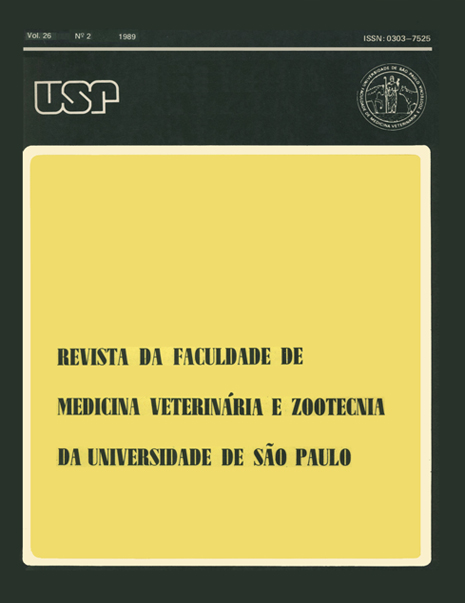Rhodes grass hay (Chloris gayana) or alfalfa hay (Medicago sativa) for calves, under diets with two levels of protein. I. Digestibility
DOI:
https://doi.org/10.11606/issn.2318-3659.v26i2p259-266Keywords:
Nutrition of calves, Digestibility of food, RoughageAbstract
Sixteen male mixed breed calves, with 55-65 kg body weight and about 3 months old, were used in digestion trials with the following treatments, arranged in a 2 x 2 factorial randomized blocks design: A) Rhodes grass hay and concentrates, 13% CP; B) Rhodes grass hay and concentrates, 17% CP; C) alfalfa hay and concentrates, 13% CP; D) alfalfa hay and concentrates, 17% CP. The concentrate: roughage proportions used were 20%:80% in the first digestion trial and 40%:60% in the second one, developed immediately after. Results with 20% hay showed better N retention (44.2%, and higher protein digestibility (71.9%) but lower fiber digestibility (37.1%) than with 40% hay (30.0%, 66.8% and 52.6% respectively). Fiber was better digested in 17% CP level (60.0%) than in 13% CP level (42.4%) inside the 40% hey proportion; within 20% hay proportion the dry matter digestibility for alfalfa hay treatment (78.9%) was higher than for Rhodes hay treatment (66.5%), inside the 17% CP level.Downloads
Downloads
Published
1989-09-15
Issue
Section
ZOOTECHNICS
How to Cite
Rhodes grass hay (Chloris gayana) or alfalfa hay (Medicago sativa) for calves, under diets with two levels of protein. I. Digestibility. (1989). Revista Da Faculdade De Medicina Veterinária E Zootecnia Da Universidade De São Paulo, 26(2), 259-266. https://doi.org/10.11606/issn.2318-3659.v26i2p259-266


